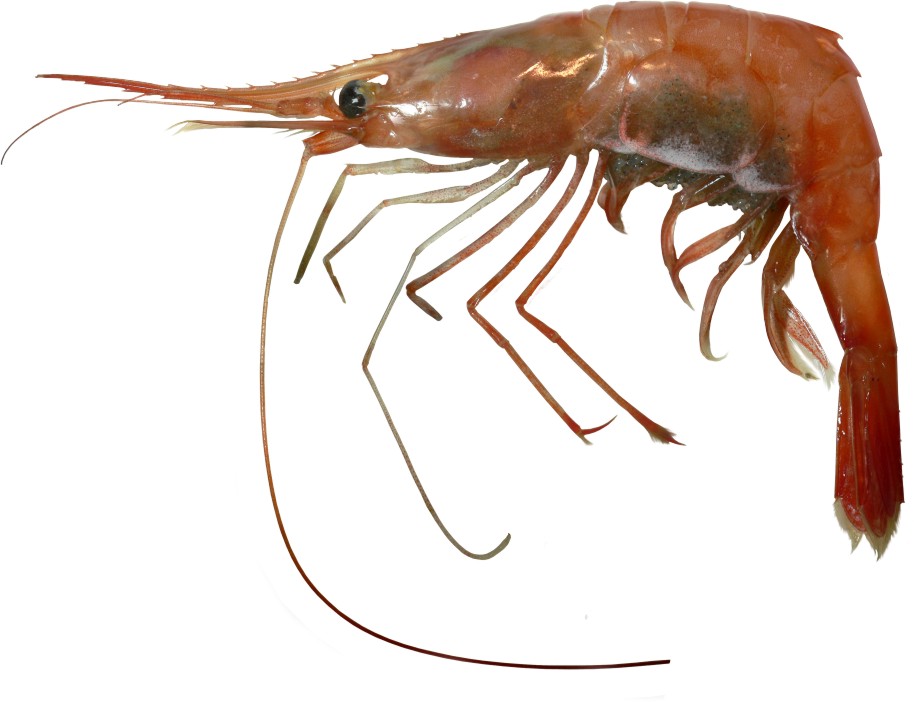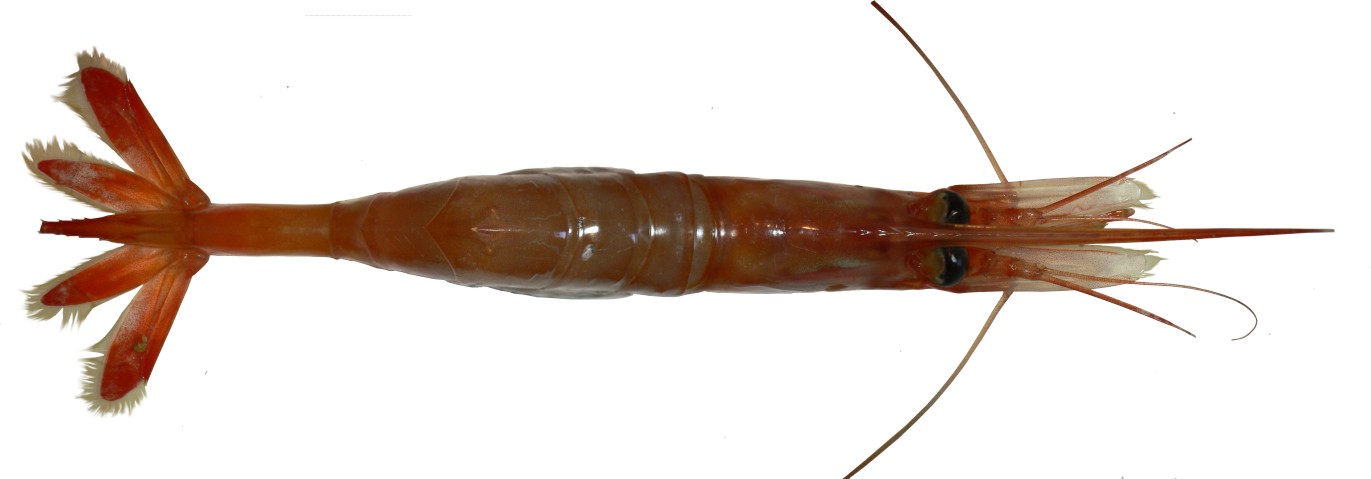Pandalus eous Makarov, 1935Common name(s): Alaska pink shrimp, Pink shrimp, Northern shrimp, Deep sea prawn |
|
| Synonyms: Pandalus borealis, Pandalus borealis eous |  |
| Phylum Arthropoda
Subphylum Crustacea Class Malacostraca Subclass Eumalacostraca Superorder Eucarida Order Decapoda Suborder Pleocyemata Infraorder Caridea Family Pandalidae |
|
| Pandalus eous, about 14 cm total length, from a 100 m depth benthic trawl in San Juan Channel, WA | |
| (Photo by: Dave Cowles, August 2006) | |
Note: This shrimp is extremely similar to Pandalus borealis, which is found in the North Atlantic ocean and round Greenland. Discussion is continuing on whether it is in fact P. borealis, a subspecies (P. borealis eous), or the separate species P. eous.
How to Distinguish from Similar Species: Pandalus jordani has similar coloration and morphology but has at most a rounded posterodorsal margin on abdominal segment 3 (but no posterodorsal spine) and no posterodorsal spine on segment 4. Most other pandalids such as P. danae do not have dorsal spines that continue out onto the distal half of the rostrum, plus have more striped coloration. P. platyceros has dorsal spines on the distal half of the rostrum but has white stripes on the carapace and white spots on the abdomen.
Geographical Range: In the Pacific, from the Sea of Japan and Korea to the Columbia River. The very similar species, P. borealis, is found In the Atlantic from Maine to Scandinavia and around Greenland
Depth Range: Subtidal. 16-1380 m depth. Common in this area from 50-90 m depths
Habitat: Soft bottoms (may migrate upward at night)
Biology/Natural History: Diet is largely small crustaceans. Pandalids capture their prey by trapping it among their legs. Predators include dogfish, Pacific cod, hake, and turbot. Parasites include the isopod Bopyroides hippolytes and the rhizocephalan barnacle Sylon hippolytes. This species is a protandric hermaphrodite. Larvae hatch in March and April and remain pelagic for 6 instars before settling to the bottom. Become sexually mature at about 18 months at a carapace length of 1.6 cm. At that time there is about a 50/50 ratio of males to females (if few females are present in the population, more males turn to females sooner). Breed in mid-November. Females carry eggs through the winter (average about 1600-2100 eggs). In their second spring most males turn into females. By 30 months all individuals are females and average just over 2 cm carapace length. Live about 3-4 years. Has been an important commercially harvested shrimp in British Columbia and Alaska.
| Return to: | |||
| Main Page | Alphabetic Index | Systematic Index | Glossary |
References:
Dichotomous Keys:Kozloff 1987, 1996 (improperly keyed in 1987 version)
General References:
Butler,
1980
Jensen,
1995
O'Clair
and O'Clair, 1998
Scientific
Articles:
Komai, T., 1999. A revision of the genus Pandalus (Crustacea:
Decapoda: Caridea: Pandalidae). Journal of Natural History
33: pp
1265-1372
A related reference: Viker, Susanne, Asa Noren Klingberg, and Per Sundberg, 2006. The complete mitochondrial DNA sequence of the northern shrimp, Pandalus borealis. J. Crustacean Biology 26:3 433-435
Web sites:
General Notes and Observations: Locations, abundances, unusual behaviors:
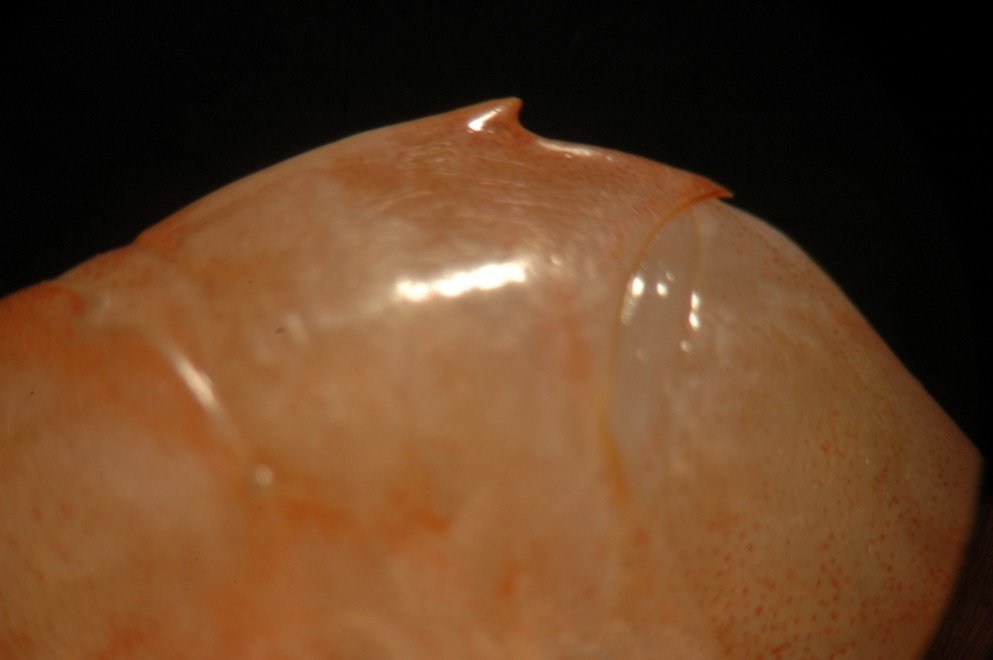
A profile of abdominal segment 3 shows the spines present near the
middle and the posterior end of the middorsal line

The fourth abdominal segment also has a spine present at the posterior
end of the middorsal line.
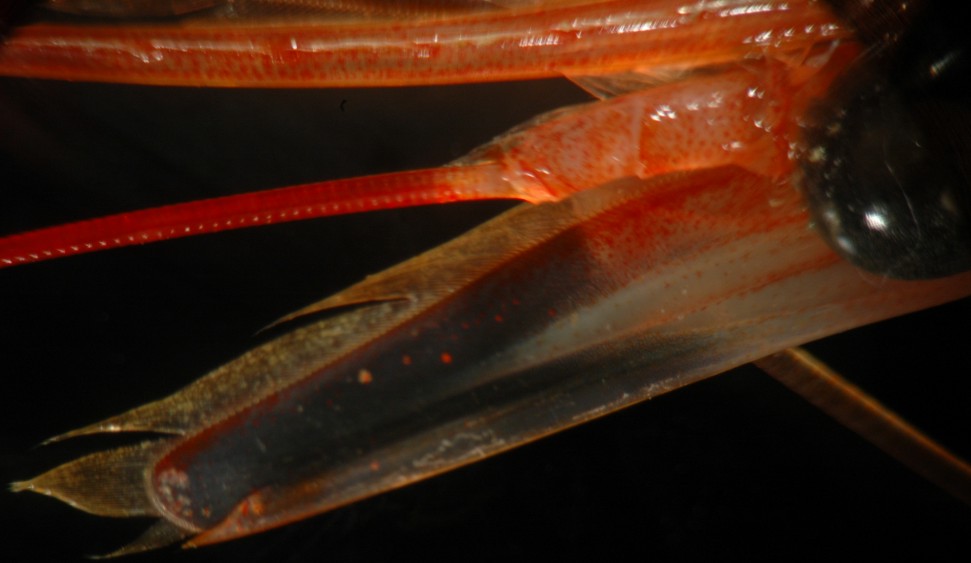
This view of the left antennal scale, which is longer than the telson
shows that the antennal lamella is slightly longer than the spine.
Just above the scale the endopodite of the second antenna, which
consists
of several segments then a flexible whiplike "flagellum" composed of
many
small segments and being about as long as the animal's body.
The antennal scale is the exopodite of the second antenna.
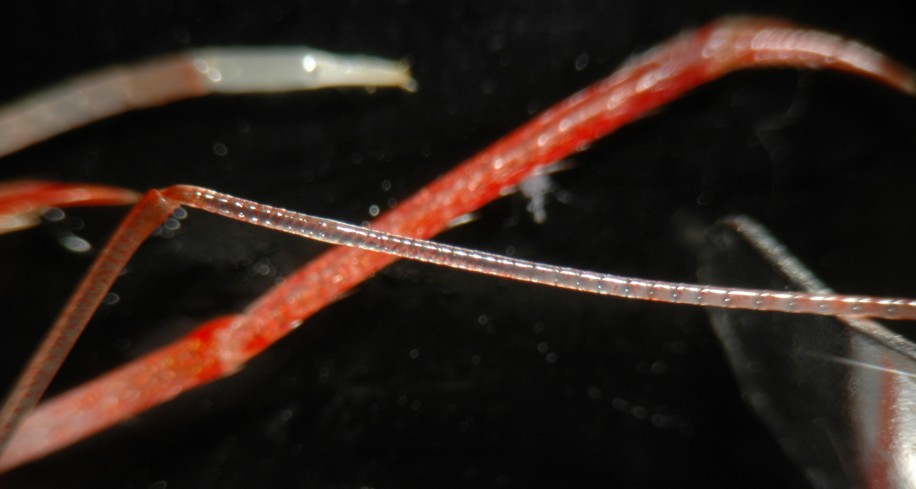
As with all Pandalids, the carpus of the second leg is
"multiarticulated"--it
has many ringlike striations in it that allow it to bend.
Most Pandalids that I have observed hold this second leg up next to
the body and it is hard to get a clear view of it in a living
individual.
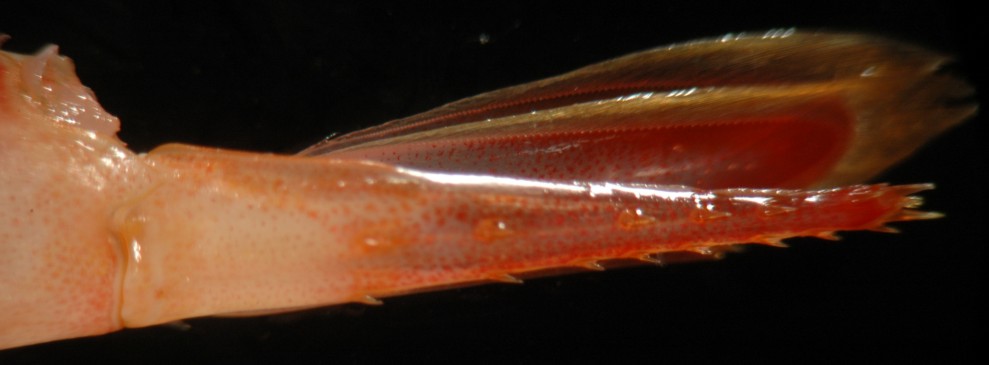
The telson has a double row of 6-10 spines along the dorsal
surface.
This is an oblique view of the telson from the right side, with the
right
uropods missing.
The left uropods, which are slightly shorter than the telson, are
visible
behind the telson.
This gravid female was collected at 375 m depth in the Okhotsk sea, near the southwestern shore of Kamchatka on April 12, 2008.
Photo by Andrey Gontchar of VNIRO
Dorsal view of the same shrimp. Photo by Andrey Gontchar.
Authors and Editors of Page:
Dave Cowles (2006): Created original page
